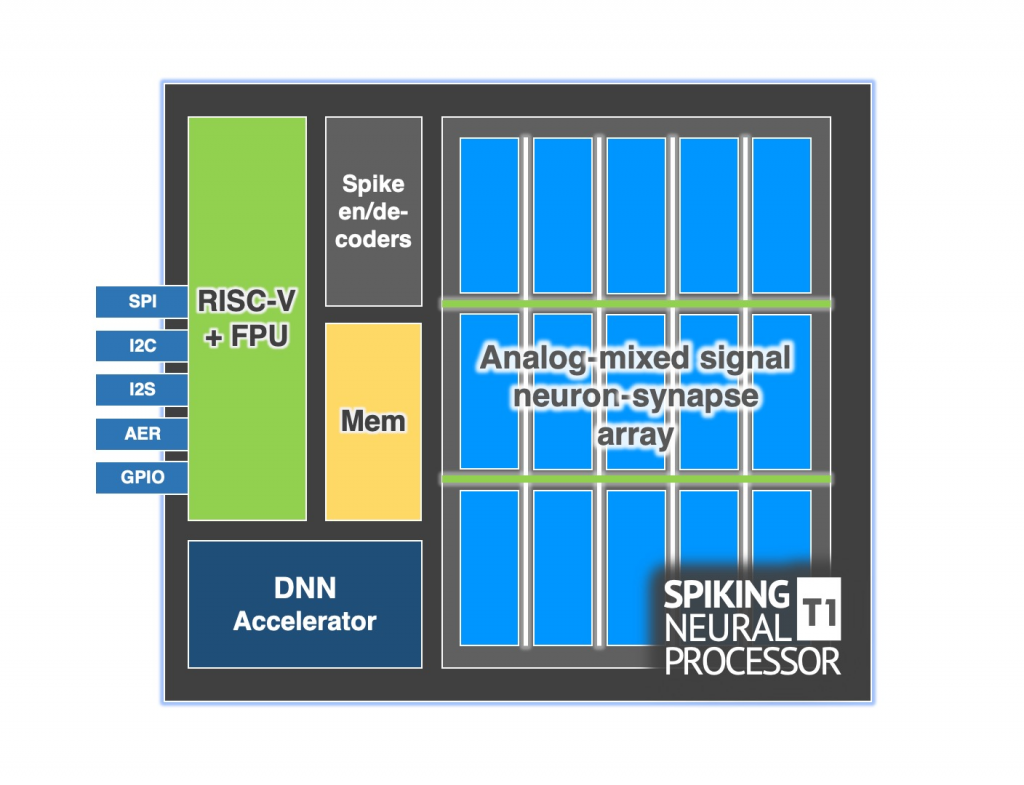Innatera’s Spiking Neural Processor T1 is an ultra-low-power microcontroller that features Innatera’s ‘analog spiking neuron-synapse array’ architecture, which enables previously unseen levels of speed and power efficiency when performing AI workloads on incoming sensor data. Key performance benchmarks when compared to standard processors are as follows:
- Up to 10,000 times higher performance per watt for standard AI/ML tasks
- Up to 500 times lower energy consumption for always-on pattern recognition (sub-mW power envelope)
- Up to 100 times shorter latency for pattern recognition (sub-millisecond)
The T1 provides a complete AI solution for microcontroller-based products in a 2.16 x 3-mm, 35-pin WLCSP package. It is built around a 32-bit RISC-V core, with 384 kB embedded SRAM, and includes QSPI, I2C, UART, JTAG, GPIO, and front-end ADC interfaces. The structure of the device is pictured below:

Place the T1 directly between a sensor and the rest of your system for fast inferencing of incoming data at all times. The T1 can detect short-term patterns in sensor data for ‘wake-type’ operation, continuous data patterns and clean up the sensor data – such as for noisy audio streams – and continue to learn for better inferencing in future, all without connecting to the cloud. The result is secure, intelligent devices for applications such as IoT, smart home, automotive, wearables, and medical devices.
Innatera’s T1 EVK (pictured) presents designers with a quick-and-easy way to evaluate this technology in conjunction with Innatera’s Talamo SDK. This can be used to generate application software for performing AI tasks and includes examples for immediate testing. The board itself features interfaces for a variety of sensors, including radar, microphones, image sensors, and IMUs, in addition to points for testing the power consumption of the device.
To learn more and apply to evaluate this technology, fill out the form below with details of your commercial project, and ipXchange will get you connected with Innatera for consultation.
(Image sourced from Innatera)

